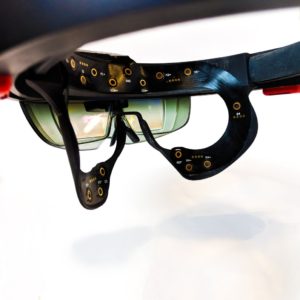How to Give Virtual Reality All the Feels
 Guillermo Bernal, a Ph.D. student at the Massachusetts Institute of Technology, might have just figured out a solution. In 2017, Bernal launched Emotional Beasts, an effort to adapt off-the-shelf virtual reality hardware with an open-source game engine to create emotive VR avatars.
Guillermo Bernal, a Ph.D. student at the Massachusetts Institute of Technology, might have just figured out a solution. In 2017, Bernal launched Emotional Beasts, an effort to adapt off-the-shelf virtual reality hardware with an open-source game engine to create emotive VR avatars.
For his work, MIT awarded Bernal the 2019 Harold and Arlene Schnitzer Prize in the Visual Arts.
For an avatar to express simmering rage or embarrassed arousal or cautious curiosity, the computer running the avatar must be able to sense the same emotions in the live human subject.
Then there are the potential secondary effects. If you teach a computer to read emotions for the purposes of say, setting up a virtual classroom for refugees or facilitating remote mental-health diagnoses, what’s to stop some retailer from using the same tech to figure out which images and ads excite you?
Dry electrodes measure skin tension on the forehead, an indicator of how much the wearer is sweating, which in turn indicates how agitated they are. Bernal also added a heart-rate sensor on the user’s temple and tweaked the microphone to register different tones of voice.
By 2018 he had a working prototype. But modifying the hardware and writing the software is just part of the solution. Bernal also needs data. Specifically, a library of how diverse groups of people all over the world express different emotions.
The way a young, upper-middle-class white guy in America shows anger on his face isn’t necessarily the way a middle-age, working-class Chinese woman might do so.
“Emotions are more complex and socially determined than the simple positive-negative, strong-weak arousal model suggests,” a team led by New York University’s Meredith Whittaker warned in a 2018 research paper.
There could be ethical and legal obstacles. Some jurisdictions already give consumers veto power over commercial use of their physiological data, and that could limit the scope of Bernal’s data set, to say nothing of complicating any wider roll-out of empathetic VR.
“The California Consumer Privacy Act for instance covers biometric information and does not allow an exception based on the idea one’s face or other biometric information is publicly available,” Mark MacCarthy, a Georgetown University professor and privacy expert, told The Daily Beast. “The Illinois Biometric Information Privacy Act prohibits companies from gathering, using, or sharing biometric information without informed opt-in consent. So, figuring out your emotions from the way you look or walk or your heartbeat needs your permission.”
See the full story here: https://www.thedailybeast.com/how-to-give-virtual-reality-all-the-feels?ref=scroll
Pages
- About Philip Lelyveld
- Mark and Addie Lelyveld Biographies
- Presentations and articles
- Tufts Alumni Bio